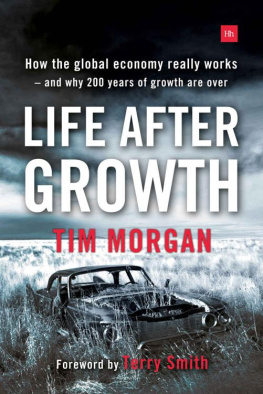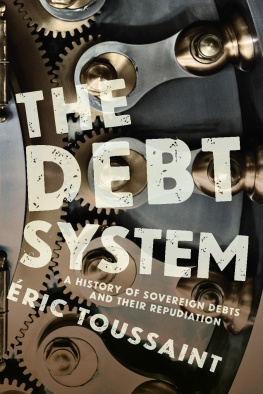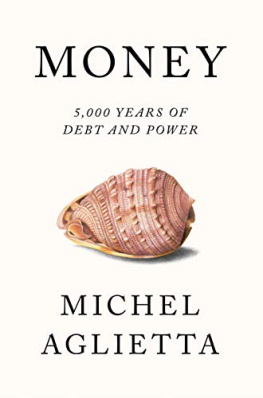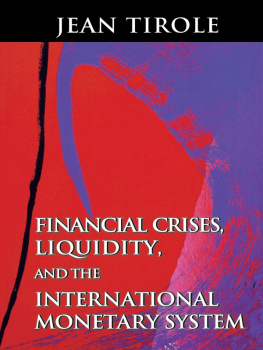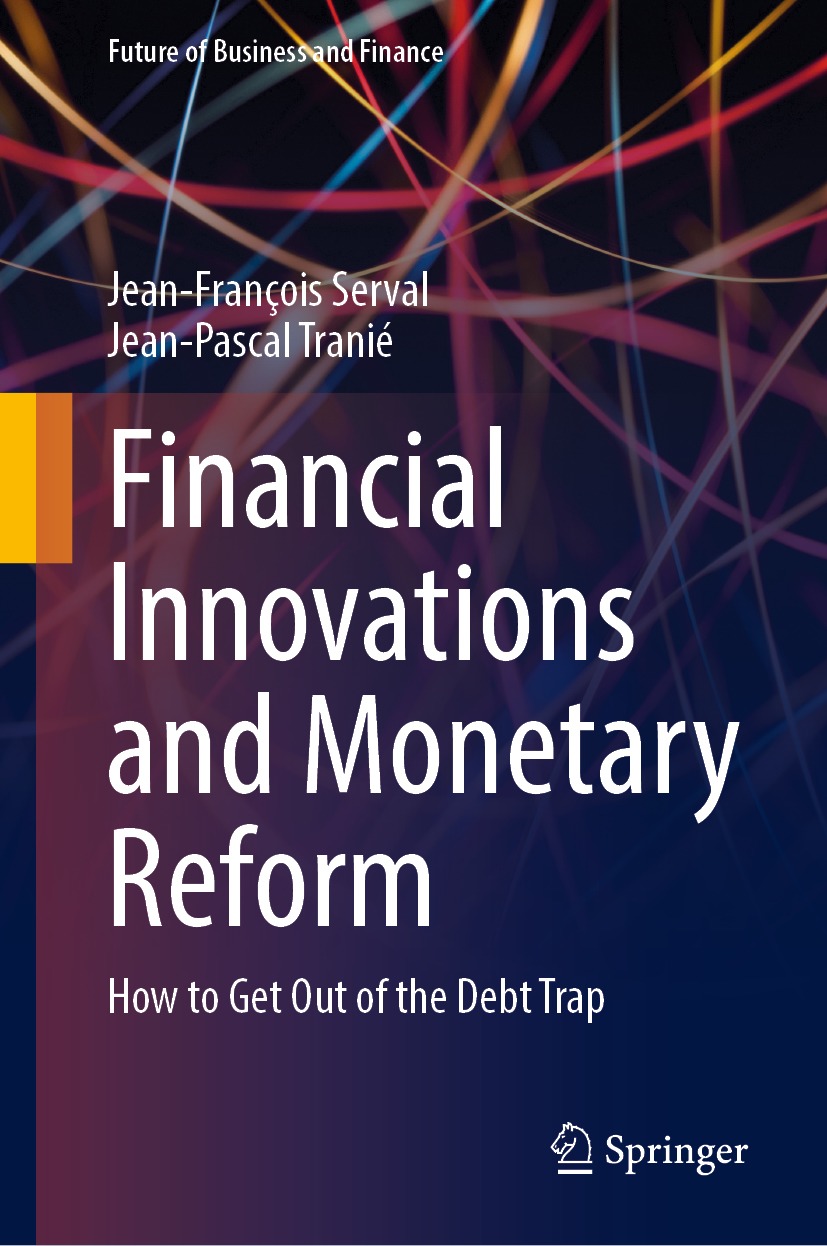Future of Business and Finance
The Future of Business and Finance book series features professional works aimed at defining, analyzing, and charting the future trends in these fields. The focus is mainly on strategic directions, technological advances, challenges and solutions which may affect the way we do business tomorrow, including the future of sustainability and governance practices. Mainly written by practitioners, consultants and academic thinkers, the books are intended to spark and inform further discussions and developments.
Jean-Franois Serval and Jean-Pascal Trani
Financial Innovations and Monetary Reform
How to Get Out of the Debt Trap

The Springer logo.
Jean-Franois Serval
Groupe Audit - Serval & Associes, Neuilly sur Seine, France
Jean-Pascal Trani
Aloe Private Equity, Paris, France
ISSN 2662-2467 e-ISSN 2662-2475
Future of Business and Finance
ISBN 978-3-031-24188-8 e-ISBN 978-3-031-24189-5
https://doi.org/10.1007/978-3-031-24189-5
The Editor(s) (if applicable) and The Author(s), under exclusive license to Springer Nature Switzerland AG 2023
This work is subject to copyright. All rights are solely and exclusively licensed by the Publisher, whether the whole or part of the material is concerned, specifically the rights of reprinting, reuse of illustrations, recitation, broadcasting, reproduction on microfilms or in any other physical way, and transmission or information storage and retrieval, electronic adaptation, computer software, or by similar or dissimilar methodology now known or hereafter developed.
The use of general descriptive names, registered names, trademarks, service marks, etc. in this publication does not imply, even in the absence of a specific statement, that such names are exempt from the relevant protective laws and regulations and therefore free for general use.
The publisher, the authors, and the editors are safe to assume that the advice and information in this book are believed to be true and accurate at the date of publication. Neither the publisher nor the authors or the editors give a warranty, expressed or implied, with respect to the material contained herein or for any errors or omissions that may have been made. The publisher remains neutral with regard to jurisdictional claims in published maps and institutional affiliations.
This Springer imprint is published by the registered company Springer Nature Switzerland AG
The registered company address is: Gewerbestrasse 11, 6330 Cham, Switzerland
From the authors, an admiring and friendly thanks to Mr. Denis Bachelot, economic journalist, the ruthless proofreader of this work. It is idea by idea, line by line, with great logical rigor, that he contributed to the coherence and clarity of our reflection on money to better bring it to the attention of the reader and allow this book to exist.
Foreword by Jacques de Larosire
It certainly takes a great deal of intellectual audacity to tackle the issue of international debt with the firm intention of finding a solution to this challenge that is mortgaging the worlds economic future, after decades of fiscal laxity. And Jean-Franois Serval and Jean-Pascal Trani are not lacking in audacity with the publication of this new book, which puts forward concrete proposals to meet the challenges of debt.
In their first book LaMonnaie virtuellequi nous fait vivre, the authors had already demonstrated their particularly detailed knowledge of the mechanisms of the monetary economy. This 2010 text, with its premonitory title, analyzes the financial crisis that marked the end of the 2000s, known as the subprime crisis, with regard to the mutations in financial innovation that have allowed for the almost unlimited creation of monetarized financial instruments, sources of virtual money, since there is no counterpart in the creation of real wealth. This observation of a new monetary space, outside the radar of central banks, led the authors to formulate one of the key ideas of their book, an idea that we shared at the time: the definition of new tools for analyzing monetary flows, called M5 and M6, which encompass the entire space in which economic agents operate and thus make it possible to grasp, in the most complete way possible, the reality of the financial assets that are used for exchanges and the values that underlie them.
In a second book, published in English, The Monetary System: Analysis and New Approaches to Regulation, Jean-Franois Serval and Jean-Pascal Trani set out the framework for regulation that is better adapted to the stability needs of the financial world, thanks to the statistical possibilities offered by the data captured by the expanded monetary space represented by M5 and M6. A better perceived reality and a better controlled reality.
This third volume aims to build a new stage in this edifice: the outline of a global reform of the international monetary systema reform that proposes the establishment of a renovated monetary universe based on the current institutions that organize international financial life and advocates the creation of a new standard, in a world where monetary issuance has been freed from all restrictive constraints since the abandonment of the gold standard in 1971. But more than that, this book puts forward a resolutely innovative approach, the central idea of which consists in transforming sterile financial masses that no longer have any economic reality because they no longer bear interest into wealth creation. To facilitate the return to the real economy, they propose that a significant part of public debt be converted into equity capital in the world of business and goods production, with the aim of finding new profitable investment projects. The idea is audacious, as we have said, and the authors endeavor to demonstrate its technical feasibility. The demonstration is convincing and appears relevant to getting out of the debt trap, while accompanying, through the mass of investments mobilized, the great technological transformation underway in the world economy.
The challenge we face is first and foremost one of production, which is the only way to provide a concrete response to the question of debt through the creation of new wealth. In this approach, money must remain as neutral as possible with respect to exchanges and therefore not interfere with the supply and demand mechanism, which must play its full role. This objective depends first and foremost on the actions of central banks, the authors emphasize. The latter must regain their role as guardians of the monetary system, whereas over the last few decades the evolution of the financial economy has created money beyond all limits.
Finally, we are convinced that this investment and production approach accompanies a movement that is already well underway, that of setting up vast national and international investment programs in major infrastructure and research projects in innovative sectors. China was the first to set an example with its new Silk Roads projects, the basis for a Chinese network of the world economy. Now, the United States and Europe are also embarking on major projects involving trillions of dollars or euros, although market forces will have to provide adequate returns on the savings available! The developed world is becoming aware that only the creation of wealththe increase in production, thereforecan overcome the crushing obstacle of debt.






